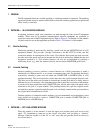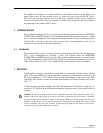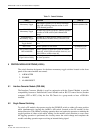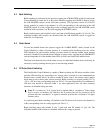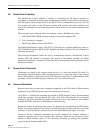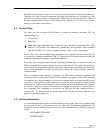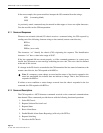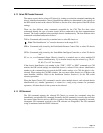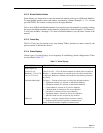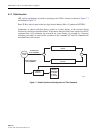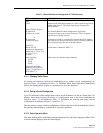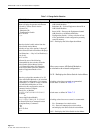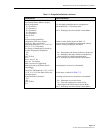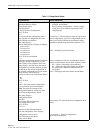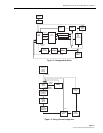
ADCP-50-304 • Issue 19 • June 1999 • Section 7: Operation
Page 7-10
© 1999, ADC Telecommunications, Inc.
6.15 Request Software Revision Level (REV) Command)
The REV command requests the CM to transmit the software revision level. The REV
command string must contain a command flag (# or $) prior to the line feed (LF) character. If an
echo flag occurs in the command string, the user must issue a GO command before the PS
chassis will return the revision level message. When the remote control device sends the
“REV#CRLF” command string, the selected PS chassis respond with the following message:
Patch Remote Control Module
Revision x.y
Copyright ADC Telecommunications, Inc.
The characters x.y above represent the revision level of the software.
6.16 Request Status (UPdate Command)
The UPdate command requests the CM to transmit the status of all the modules contained in the
selected PS chassis. The UPdate command string must contain a command flag (# or $) prior to
the string terminating CR/LF characters. If an echo flag ($) occurs in the UPdate command
string, the user must issue a GO command before the PS chassis status is transmitted.
6.17 Status Responses
Status is transmitted from the CM to the requesting remote control device in one of three
formats. The format transmitted depends upon the type of select command used when the
chassis is originally selected. If the “TLKxx” command activated the PS chassis, the status
response formats outlined in Table 7-2 through Table 7-5 are returned. The status response
format associated with the "SPKxx" command is outlined in Table 7-6. The status response
format associated with the “CRTxx” command is described in the SwitchMate Switch Cluster
Controller Software Specification, ADCP-50-595.
6.18 TLKxx Format
When using the TLKXX format, control is by means of menu selections, module position
entries, and control keys. Each of these are described in the following paragraphs.
6.18.1 Menu Selection
When using the TLKxx format, most data entries are through menu selections. All menus are
described later in this section as part of the operating procedures.
The > symbol shown with each menu is the “invitation to type”, indicating that system is
waiting for operator input. Default key-ins are shown in parenthesis. A dash in parenthesis
indicates that there is no default selection for the menu.
(–) > — To enter a selection, type selection number and press RETURN.
(3) > — The number in parenthesis indicates the default selection. To enter a different selection,
type desired selection number and press RETURN. If number in parenthesis is the number of
the desired menu item, just press RETURN.



